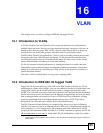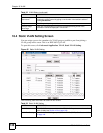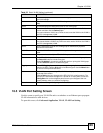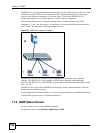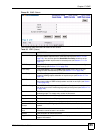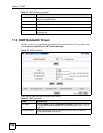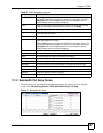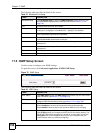
IES-612-51A User’s Guide
153
CHAPTER 17
IGMP
This chapter describes the IGMP screens.
17.1 IGMP
Traditionally, IP packets are transmitted in one of either two ways - Unicast (1 sender to 1
recipient) or Broadcast (1 sender to everybody on the network). Multicast delivers IP packets
to just a group of hosts on the network.
IGMP (Internet Group Multicast Protocol) is a network-layer protocol used to establish
membership in a multicast group - it is not used to carry user data. See RFC 1112 and RFC
2236 for information on IGMP versions 1 and 2, respectively.
17.2 IP Multicast Addresses
In IPv4, a multicast address allows a device to send packets to a specific group of hosts
(multicast group) in a different sub-network. A multicast IP address represents a traffic
receiving group, not individual receiving devices. IP addresses in the Class D range (224.0.0.0
to 239.255.255.255) are used for IP multicasting. Certain IP multicast numbers are reserved by
IANA for special purposes (see the IANA web site for more information).
17.2.1 IGMP Snooping
A layer-2 switch can passively snoop on IGMP Query, Report and Leave (IGMP version 2)
packets transferred between IP multicast routers/switches and IP multicast hosts to learn the IP
multicast group membership. It checks IGMP packets passing through it, picks out the group
registration information, and configures multicasting accordingly. IGMP snooping allows the
IES-612-51A to learn multicast groups without you having to manually configure them.
The IES-612-51A forwards multicast traffic destined for multicast groups (that it has learned
from IGMP snooping or that you have manually configured) to ports that are members of that
group. The IES-612-51A discards multicast traffic destined for multicast groups that it does
not know. IGMP snooping generates no additional network traffic, allowing you to
significantly reduce multicast traffic passing through your device.
17.2.2 IGMP Proxy
To allow better network performance, you can use IGMP proxy instead of a multicast routing
protocol in a simple tree network topology.



